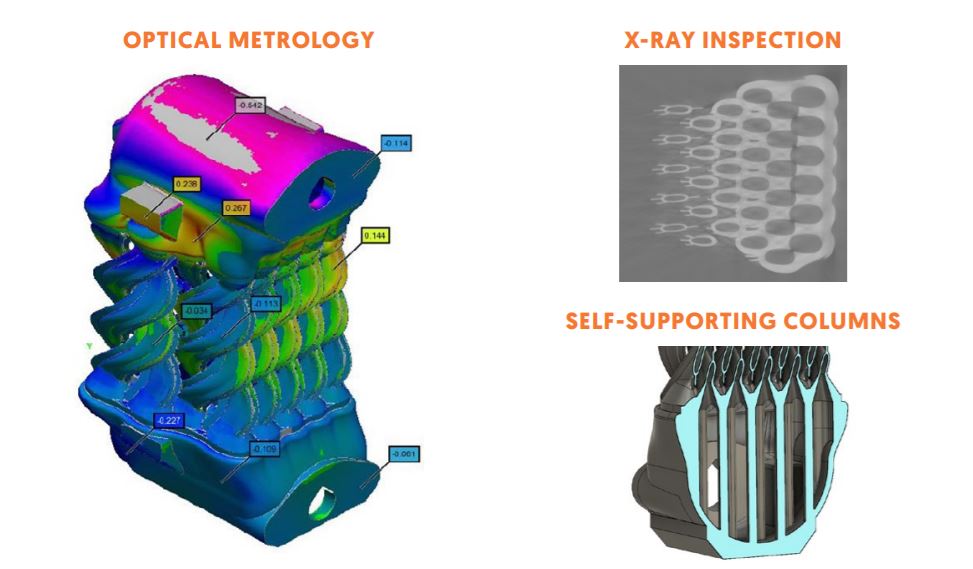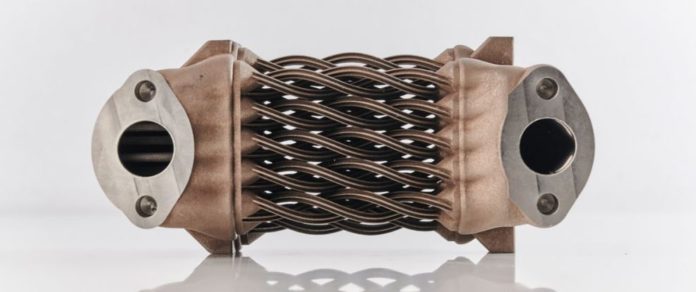For those who are not familiar with industrial components, note that a heat exchanger, as the name implies, is a system used to transfer heat between two or more fluids of different temperatures. This means they can be used in both cooling and heating processes.
Those devices usually constitute a great example of applications for additive manufacturing in demanding industries like aerospace. However, although the final result is almost always astonishing, using AM for complex components like heat exchangers does come with its share of challenges – especially when it comes to manufacturability and inspection.
Reality is, shell and tube heat exchangers are usually made up of tens of components welded together. The geometry of the tubes connecting the inlet and outlet plenums is usually limited to straight tubes, resulting in powder trapped in the channels, and residual stresses that can distort the parts.
One way to address this issue was to leverage “DfAM” principles. (Design for AM). The engineering team at UK-based Manufacturing Technology Centre explored these principles for the tube component of a single pass shell and tube heat exchanger. Those principles have been used alongside a metal laser powder-bed fusion; a wire electro discharge machining; a CNC machining as well as a non-destructive inspection as other manufacturing and inspection technologies.
The manufacturing process reveals that by re-designing the new heat exchanger tube core design with 33 helicoidal channels, they have been able to increase the length of heat transfer and fins to increase the surface area. At the design level, they used Autodesk Fusion 360 to generate the structures and they manufactured the part with Ti6Al4V without internal support structures.

In the end, the team revealed that they have been able to consolidate 40 parts into a single one. While advanced inspection methods help them to quickly identify the trapped powder into the component, the steps they undertook at the manufacturing level helped to better understand the geometrical distortion in such a component.
The best part of it, is the validation of the end-to-end build and post-process processes and evaluation of the data generated.
Remember, you can post free of charge job opportunities in the AM Industry on 3D ADEPT Media or look for a job via our job board. Make sure to follow us on our social networks and subscribe to our weekly newsletter : Facebook, Twitter, LinkedIn & Instagram ! If you want to be featured in the next issue of our digital magazine or if you hear a story that needs to be heard, make sure to send it to contact@3dadept.com






